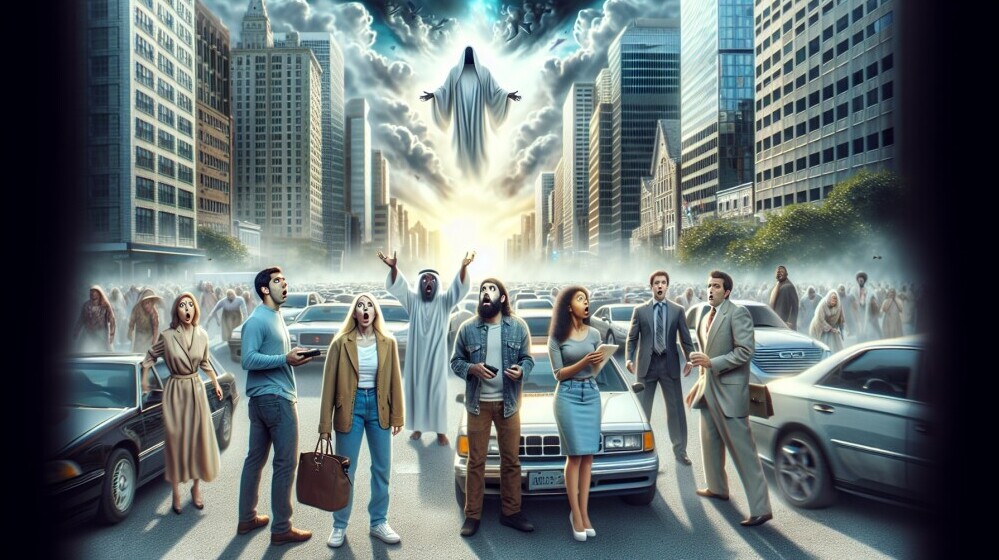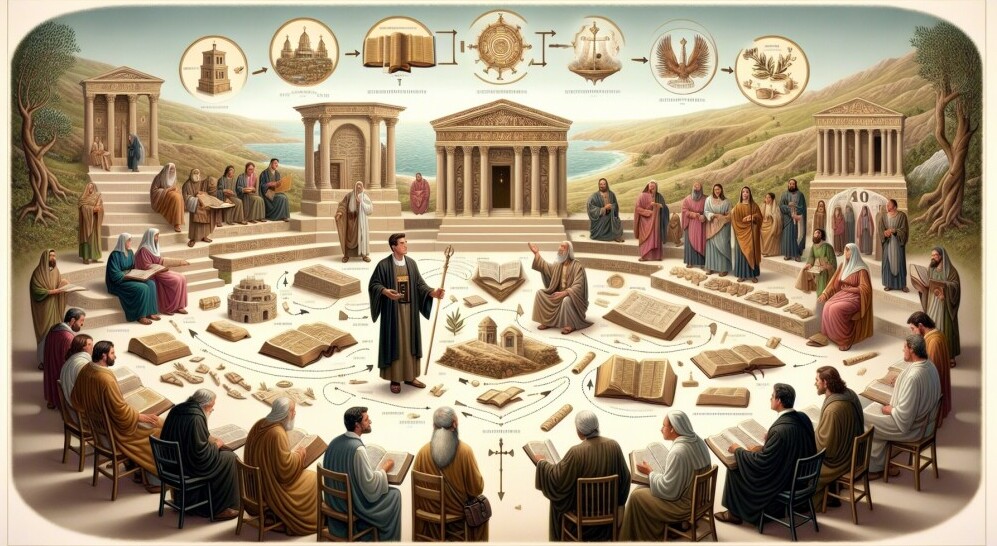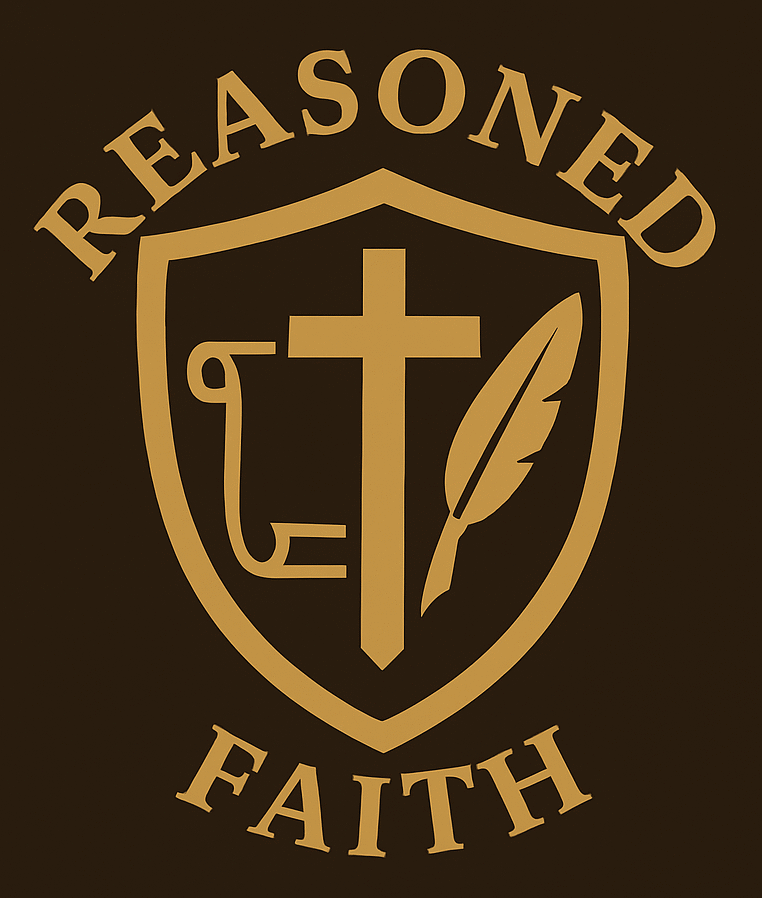
The Rapture isn’t some age-old teaching passed down through centuries. It’s a pretty modern concept that cropped up among some Protestant groups. Imagine this: Jesus sweeping believers up to heaven in the blink of an eye, leaving others behind scratching their heads as chaos unfolds. This idea gained momentum in the 19th century, thanks to a particular branch of Protestantism called dispensationalism. By the way, this isn’t about a biblical or historical fact; it’s more like a storyline that’s taken on a life of its own.
While traditional Christian teachings focus on the Second Coming, this Rapture concept suggests a secretive “first act” of sorts. The biblical script doesn’t include Jesus making an incognito visit to take believers away. Instead, it tells us about a future when everyone, believer or not, will witness His return. Turns out, the ‘left behind’ notion is more pop culture than scripture.
If you’re wandering into the world of Rapture discussions, keep an open eye and know it’s not rooted in the Bible itself. Think of it as a lens through which some choose to interpret biblical prophecies, rather than a concrete passage. It’s always good to explore different views but remember to ground them in actual scriptural text. That way, you’re looking at the big picture, not just one painted by recent interpretations.

Examining Misinterpreted Biblical Passages: Common Misconceptions
There are a few Bible passages folks often point to as evidence for the Rapture, but they might not mean what many think. Take 1 Thessalonians 4:16-17, for example. At first glance, it seems like it talks about believers being whisked away. In reality, this passage describes a grand, public event — Jesus’s Second Coming. It talks about Him arriving with the sound of a trumpet and every eye witnessing the moment. The whole secret rapture idea? That’s missing from the text.
Then there’s Matthew 24:40-41, where we read about one person being taken and another left. It’s easy to see how that fits the Rapture narrative — but context is king. Here, Jesus is referencing the days of Noah, where those who were ‘left behind’ were saved during the flood. It’s a story about judgment, not a selective escape act for believers.
Another misinterpreted passage is Luke 17:34-35. This one is often pulled into Rapture discussions. Again, in context, it speaks to the final judgment where Jesus makes the ultimate call. The idea isn’t about a sudden departure but rather a symbolic representation of judgment.
When you’re exploring these topics, approach them with a zoomed-out perspective. It’s important to see scripture as a cohesive whole, rather than piecing together singular verses to support a standalone theory. Understanding the broader narrative of the Bible can clarify things that might seem confusing at first.

The Biblical Perspective on Jesus’s Second Coming and Judgment
Luke 17:34-35 often crops up in discussions about the Rapture, but like other passages, context matters. This particular scripture is frequently cited as proof of people being taken and others left behind. But it speaks to the final judgment, where Jesus sorts souls based on their lives. It’s not about being secretly spirited away but rather being subject to divine judgment, which is metaphorical rather than literal.
The Rapture concept tends to separate the Second Coming into two distinct events, but the Bible paints a different picture. Scriptures consistently depict Jesus’s return as a one-time event — a singular, grand reappearance where the world collectively stands witness. It’s not split into secret and public versions. When Paul wrote to the Thessalonians, he wasn’t laying out a two-act plan; he emphasized vigilance against false teachings that might complicate the simplicity of Christ’s return.
Understanding these passages within their broader biblical context can be enlightening. The Second Coming is a shared moment waiting on the horizon, a promise of final judgment and transformation that all will experience. It’s a unified event, wrapped in significance and attributed with profound collective impact.
For anyone sifting through these ideas, keeping sight of scripture’s core messages can help avoid diving into fragmented theories. The Bible aims to unite rather than confuse its readers, offering clarity on events like the Second Coming. Anchoring thoughts in well-rounded biblical knowledge is the key to understanding these prophetic promises.

The Christian Tradition and Modern Views on the Rapture
The Rapture concept stands apart from the teachings embraced by the broader Christian tradition. Take the Catholic Church, for instance; it’s pretty clear in rejecting the notion of a secret gathering of believers. Instead, Catholicism, along with many other Christian branches, holds onto the Second Coming as a public and final Judgment Day when everyone’s faith, living and dead, faces the ultimate test.
This isn’t just a personal or narrow interpretation—it’s echoed throughout traditional teachings that span centuries. The Catechism of the Catholic Church, particularly CCC 682, refers to Jesus revealing the truths of all hearts at the end. This aligns with the idea of an inclusive, revealing, and conclusive Second Coming.
The Rapture’s rise in popularity can be traced back to the 19th century, principally through dispensationalist theology, which wasn’t part of traditional teachings until then. This perspective gained traction over time, fueled by theological movements and sometimes even modern media, without having deep roots in historical Christian doctrine.
For those exploring the vast maze of Christian beliefs about end times, it’s insightful to recognize how the idea of the Rapture fits within a broader theological context. Leaning into traditional teachings offers a richer, more comprehensive understanding that stands the test of time. Knowing where these beliefs come from can ground your understanding and provide clarity amid diverse perspectives.

Modern Origins of the Rapture: Theological Insights
The idea of the Rapture, as captivating and widespread as it may be now, really picked up steam in the 19th century. This wasn’t something ancient theologians were discussing over dusty scrolls; it was introduced by dispensationalist theology, a relatively new wave of thought in the grand timeline of Christianity.
Dispensationalism broke from traditional views, offering a fresh twist on prophecy and end-times that appealed to many believers looking for ways to navigate their religious landscape. This new interpretation carved out a niche, suggesting the Rapture as part of a broader divine plan, separate from the main narrative of a singular Second Coming.
Despite the allure of this idea, many Christian traditions remain adamant in their focus on the Second Coming as the ultimate event. By clinging to the vision of a unified return and judgment, they emphasize a cohesive biblical narrative that doesn’t splinter into separate occurrences.
Exploring these modern developments in theology requires an open mind and a willingness to dive deep into how interpretations evolve. It’s a reminder of how new ideas can shape thought but also reinforces the value of understanding the foundational beliefs that have carried Christianity through the ages.
Ultimately, for those curious about the Rapture, it’s a journey through both modern interpretations and ancient wisdom, encouraging one to weigh new perspectives against the time-honored teachings that form the bedrock of Christian faith.
(Here’s a little transparency: Our website contains affiliate links. This means if you click and make a purchase, we may receive a small commission. Don’t worry, there’s no extra cost to you. As an Amazon Associate I earn from qualifying purchases.)
Recommended Readings:
The Rapture Trap: A Catholic Response to End Times Fever by Paul Thigpen
The Rapture Trap: The Biblical Facts Surrounding the Rapture and Second Coming

From a Jungian standpoint, the Rapture concept might represent a powerful archetype of transformation or collective fear of the unknown, rather than a literal event. Like financial myths, it can captivate us emotionally. However, we should explore deeper psychological and spiritual truths before embracing modern interpretations that lack foundational roots in scripture. How do you think the Rapture taps into collective unconscious fears or desires for transformation, similar to the myths and symbols Jung explored?
Thanks for your interesting take on the Jungian perspective! While it’s fascinating to consider how the Rapture could symbolize transformation or collective fear, it’s important to note that, although the Rapture as commonly understood doesn’t appear in Scripture, Christians firmly believe in the Second Coming of Jesus as a real, literal event, not just an archetype or symbol. This belief is deeply rooted in Scripture and Tradition, with passages like Matthew 24 and 1 Thessalonians 4 pointing to Jesus’ return at the end of time.
So, while exploring psychological and symbolic meanings can be insightful, for Christians, the Second Coming represents the actual fulfillment of God’s promise to restore the world and judge the living and the dead. It’s a profound reality of hope and transformation, but one that we see as grounded in our faith and the teachings of Christ, not merely a collective unconscious desire for change.
I appreciate the thought-provoking discussion and would love to keep exploring these ideas with you!
Hi,
I found this an interesting read especially that you reasoned people should see the Bible as a cohesive whole when considering its texts.
I’ve discovered the Bible actually interprets itself. And while it does speak in symbolic/ literal/ and prophetic terms it never contradicts itself or moves away from the main them of paradise and blessings being restored to the earth under God’s Kingdom with Christ as King.
The Bible is truth! there’s no doubt about that. Everything is validated by being verified and that’s what we base our hope on. Not unfounded shaky traditions or customs.
Thank you for sharing your thoughts! I agree that the Bible presents a cohesive and unified message focused on God’s Kingdom and Christ as King. However, the idea that “the Bible interprets itself” is challenging, as Scripture itself doesn’t make this claim. Instead, it consistently points to the Apostles and their successors as the authoritative interpreters and teachers. From the beginning, the Church has relied on both Scripture and sacred traditions passed down by Jesus and the Apostles, ensuring our hope is rooted not in “unfounded shaky” traditions and customs but in Christ’s teachings, faithfully preserved by the Church.
Key passages—such as Matthew 16:18-19, Matthew 18:17, and Acts 15:1-29—show that Jesus entrusted Peter, the Apostles, and the early Church with teaching authority, guided by the Holy Spirit. Other verses, like 1 Timothy 3:15 and 2 Thessalonians 2:15, emphasize the Church as the “pillar and foundation of truth,” tasked with upholding and interpreting both Scripture and Sacred Tradition. Hebrews 13:17 further highlights this, encouraging believers to “obey your leaders and submit to them, for they are keeping watch over your souls.” This reflects the spiritual and doctrinal authority given to Church leaders, particularly the successors to the Apostles, who guide and protect the faithful and uphold unity in the faith from the beginning of Christianity to today.
I appreciate your insight and am genuinely interested in understanding your view that “the Bible actually interprets itself.” I’m not dismissing this out of hand—I’d love to explore any specific passages that you feel affirm or support this idea within Scripture. It’s a fascinating concept, and I’m curious to see how this understanding might be supported by biblical texts.